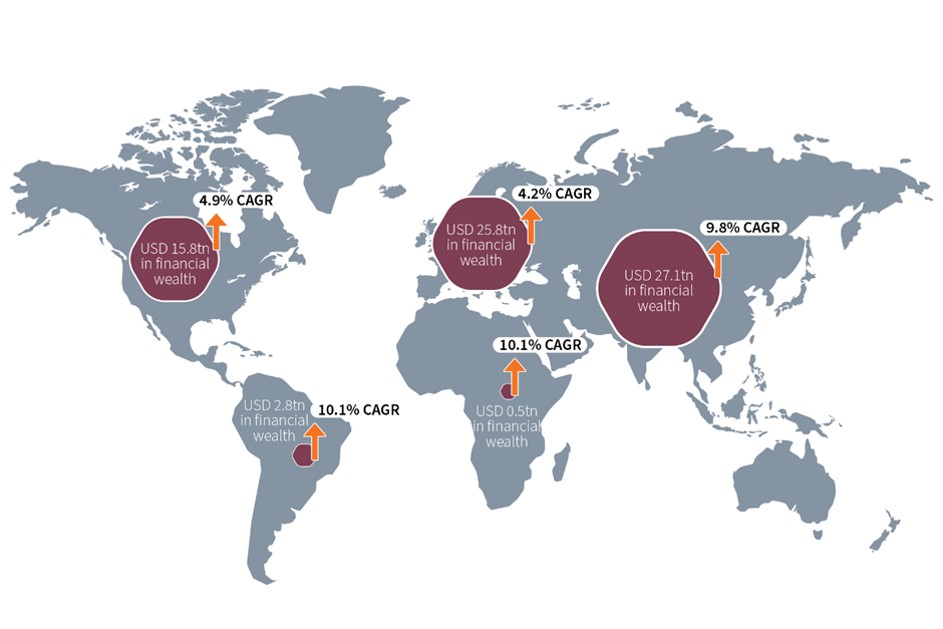Strategy
OPINION OF THE WEEK: Wealth As A Service: Looking Beyond “Crazy Rich Asians”

The author of this opinion piece explores the promise and challenges of serving mass-affluent wealth management clients in the Asia-Pacific region.
In this incisively written comment piece, Yash Shah, an
associate partner for Synpulse, a global management
consultancy, argues that Asia’s mass-affluent client segment
deserves more love and attention from wealth management
businesses. Drawing on data and examples, he explains this
position. This certainly adds to conversations about the smart
way for banks and others to position themselves in the next few
years. And it is relevant not just for Asia-Pacific but
other regions too. As always, the views of guest writers aren’t
necessarily shared by the editorial team. We invite replies and
debate. So get into the conversation! Email tom.burroughes@wealthbriefing.com
Introduction
Wealth management has seen consistent and sustained growth
globally, becoming increasingly competitive over the pandemic
years, and thus, providing differentiation opportunities to
wealth managers. Hyper-personalisation and digital or hybrid
advisory, which benefited from a sharp rise in the number of high
net worth individuals (HNW individuals), have become key methods
for capturing client assets across the wealth spectrum.
Global surge in wealth management demand
The global WM market, as projected in the World Ultra Wealth
Report 2022, is anticipated to generate a revenue of $850.90
billion, growing at a compound annual growth rate (CAGR) of 7.1
per cent from 2021 to 2028. Data from the 2022 Credit Suisse
Global Wealth Report also shows that there was a “rapid rise in
millionaires” in 2021, where the global population of ultra-high
net worth individuals (UHNW individuals) with a net worth of
above $50 million grew by 46,000 to a record high of 264,200. The
trend line clearly points towards an accelerating demand for
wealth advisory and management services across the world map.

Figure 1. Global UHNW growth from 2012 to 2022
The underserved Asian wealth segment
If we zoom into the hotspots of this rising wealth management
demand, it is not surprising to see a healthy distribution
between the developed Western countries and emerging Asian
economies. Based on a BCG report, with $47.3 trillion in private
wealth currently, behind only North America’s $50.8 trillion,
Asian economies are set to grab the top spot within the next five
years. This has motivated all the major WMs to add ‘growing in
Asian markets’ to the top of their to-do lists.
However, the fastest growing wealth segment in Asia is still left unserved: the mass affluent. With a 9.6 per cent annual CAGR, the MA segment has already outpaced its HNW counterparts. In addition, this large pool of assets is predominantly held in cash positions, and over a third of this pool is not receiving any active WM advice. This presents a tremendous untapped opportunity for the global WMs to increase their footprint and the local financial institutions (FIs) to enter the wealth management arena.

Figure 2. Global mass affluent financial wealth
Mobile-first wealth management at scale
Many might be unfamiliar with emerging market universal banks and
insurance firms, but they are by no means small. Owning a
significant share of the retail segment in their respective home
locations, these banks have a refreshed focus
on carving out the mass-affluent segment and offering
wealth management services regionally to this banking population.
The proven way to achieve this is with a modular advisory
offering that leverages digital channels backed by a performant
and sophisticated wealth platform as its central building block,
particularly in the post-Covid-19 era.
Southeast Asia added 20 million new internet users in 2022 alone, to the current total of 460 million. Investing digitally is not only an expectation but also a preference for the average MA investor. Moreover, a significant reduction in client acquisition and retention costs paired with the evolving business owner and investor profiles are driving this wave of digitalisation.
While we have established that digitalisation can help regional banks to unlock the mass-affluent wealth pool and achieve a strong profit potential, winning and retaining this client base is a complex affair.
FIs need to start with investing in digital channels, wealth platforms, and a financially literate workforce, which enables an efficient operating model. This requires substantial upfront investment in technology, infrastructure, and human capital, with a high risk of cost and schedule overruns. To launch such a wealth operating model, top management needs to 1) align on the long-term digital strategy and roadmap and 2) dedicate necessary resources – time, talent, and money. A high level of commitment will help the Tier 1 FIs to create a moat around their wealth managers' offerings, and thus create high barriers of entry for Tier 2 and 3 banks and wealth managers, with access to limited capital and liquidity.
It's not all gloom and doom though; an alternative is to engage trusted wealth service and platform providers. Tier 2 and 3 wealth managers can outsource the technology and operational aspects of their business to these platform providers while focusing on client servicing and retention. This will help to create a more distributed wealth landscape for the mass affluent customer to choose their wealth management provider of choice but, more importantly, lead to the democratisation of Wealth as a Service (WaaS).